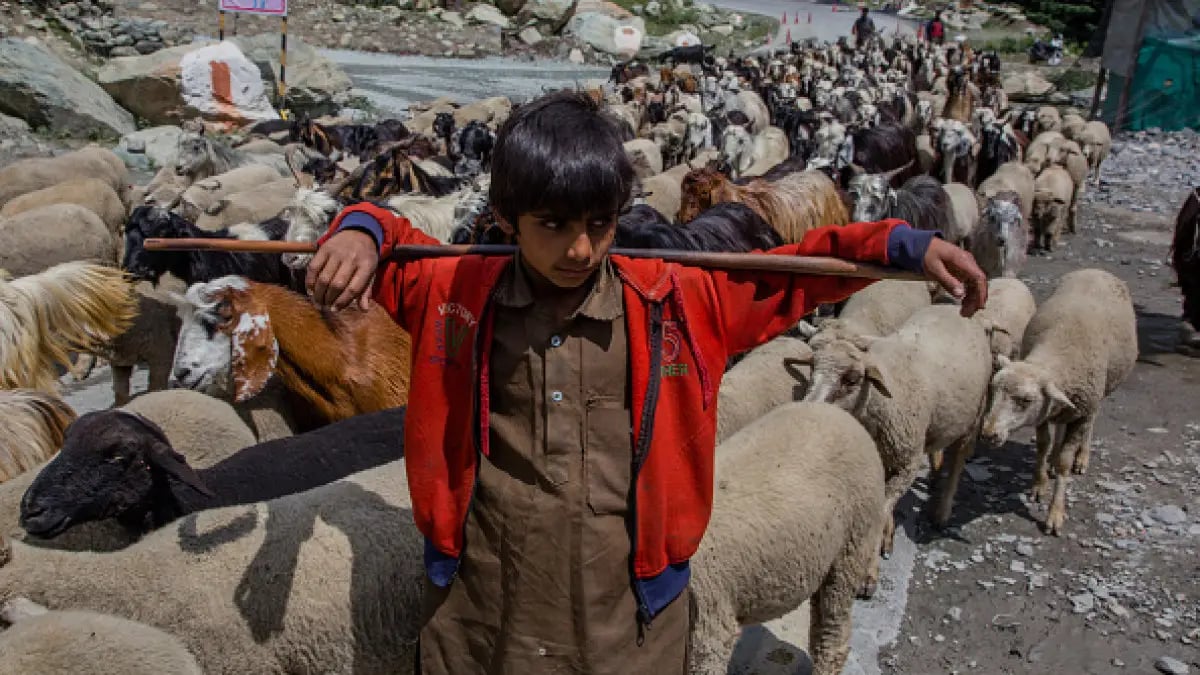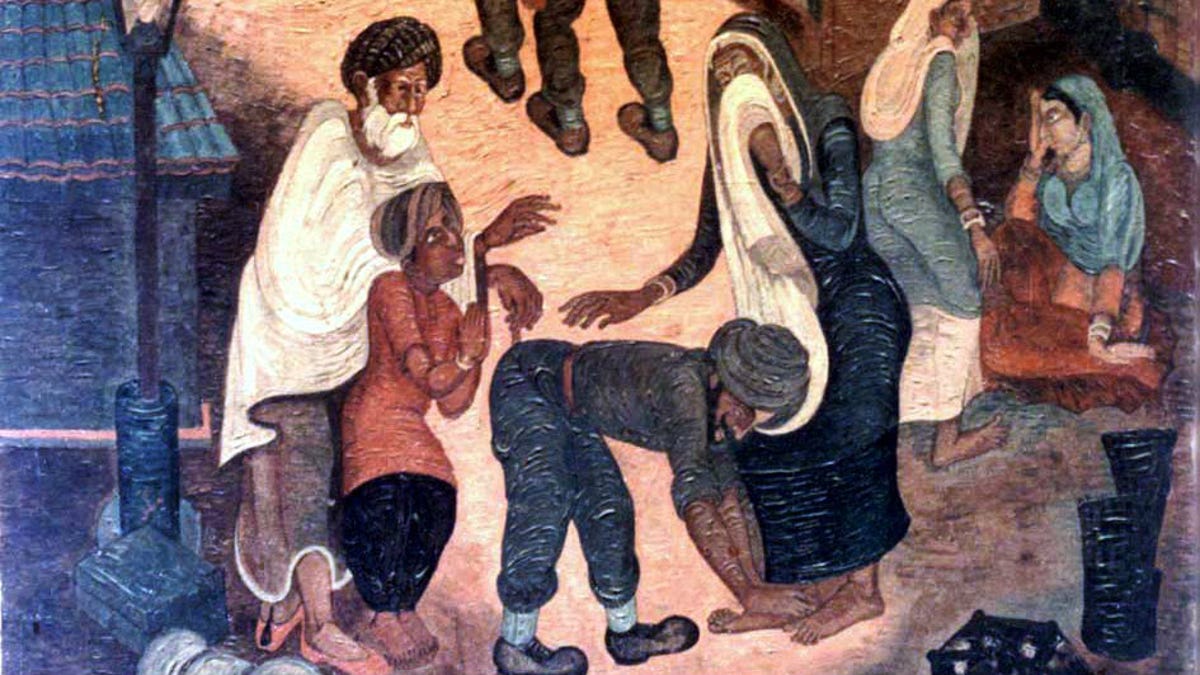Gujjar Punjabis have been living in Kashmir valley from centuries...
In Kashmir, the separatist politics has existed for long but the geographical location of the Gujjars on border regions makes them disconnected from the separatist agenda of the Valley.

www.outlookindia.com
For centuries tribes have grazed their livestock on the lush pastures of Jammu and Kashmir. Now their religion and way of life are under attack, writes Zafar Dar

www.independent.co.uk
Punjab has a history of traitors. Who invited Mughals in Punjab? Even today you people celebrate its history as if they were your own people. Not only you sold your women, you sold your land to them. It is written all over history books that Punjabis use to shower roses on foreign invaders on the banks of River Ravi.
Why half a million people from Punjab enlisted to fight for Britain in World War I
Of the million or more Indians who served abroad, some 480,000 came from Punjab.

qz.com
Historically Kashmir was an independent state with its own Kings one that was ruled by even Kashmiri Muslims. Due to regional invasions including that of neighbouring Punjab, Kashmir was under the control of Doghras. Nehru btw was a Kashmiri Pandit. In any case, besides religion, there are no fundamental differences between Muslim and Hindu Kashmiris.
There was famine in Kashmir and some of them did migrate to Punjab. If there was no famine in Punjab, you can thank yours masters, the British for that, who developed the agriculture.
From British Colonization to the Green Revolution:
The colonial rulers transformed Punjab’s land into intensified systems of irrigation, which involved growing cash crops. In particular, during the formation of the famous Chenab colony, the Chenab river was transformed into a system of perennial canals (Barrier, 1967, p. 356). The British considered the Chenab colony its “model” colony, using it as a blueprint as they sought to transform other areas in Punjab. Overall, in the colony, six million acres of desert land were converted into systems of intensive irrigation (Talbot, 2012, p. 7). The British introduced cash crops, including wheat, tobacco, sugarcane, and cotton at the expense of traditional crops (Talbot, 2012, p. 5). By the end of the 1920s, Punjab produced a tenth of India’s total crop production and a third of its wheat; its per capita crop output increased by forty-five percent between 1891 and 1921 (Talbot, 2012, p. 5).
Wheat was an important cash crop because of its export value. In the Chenab, Jhelum, and Lower Bari colonies, wheat alone made up more than thirty-percent of all cultivated areas (Ali, 2014, p. 224). In other areas, it sometimes made up half of all cultivated land due to the
abundant supply of canal water, and commanded high prices since it was primarily grown as an export crop. New varieties of wheat were created in order to fulfill the needs of the British market; the English, under Forbes Watson, tested more than one thousand samples of Indian wheat (“Agrarian Conditions of Punjab,” p. 8). Traditional red wheat started to be replaced by white wheat, as the British favored the latter for bread and flour (Ali, 2014, p. 244).
The British encouraged farmers to cultivate another cash crop, cotton, to support their own textile market (Ali, 2014, p. 225). Although cotton was not as popular in the early years of colonization, from 1910 to 1940, the proportion of cotton increased by fifty percent in both the Jhelum and Chenab colony; in the Lower Doabi colony, cotton cultivation at times equaled the production of wheat (Ali, 2014, p. 225). Furthermore, the British Cotton Growing Association (BCGA) received a grant of 7,500 acres for the cultivation of cotton; the grant was the largest given to a metropolitan commercial organization in the colonies (Ali, 2014, p. 226). The BCGA bred seeds for positive traits, managing crops that were later exported to textile mills in Lancashire (Ali, 2014, p. 226): colonial innovation adapted American long staple cotton to Punjab’s soil and climate (Ali, 2014, p. 225). More than one thousand samples of Indian wheat were tested in England under Forbes Watson (“Agrarian Conditions of Punjab,” p. 8). The British strategically chose cash crops, such as cotton, based on their profitability as exports.
And oh btw the origin of the Indus River is in the Himalayas. Without that you would just be a desert.
Bhat, also spelled as Bhatt or Butt, is a
Kashmiri Pandit surname found among the
Brahmins of the
Kashmir Valley, as well as
Kashmiri who migrated to
Punjab, a region now divided between India and the neighbouring
Pakistan. Many such Kashmiri Muslims migrated to Punjab in the late 19th century/early 20th century due to the 1878 Kashmir drought, escaping discrimination by local rulers and seeking trade opportunities. The surname is now shared by both
Kashmiri Hindus and
Kashmiri Muslims who mostly retained their last names.
















